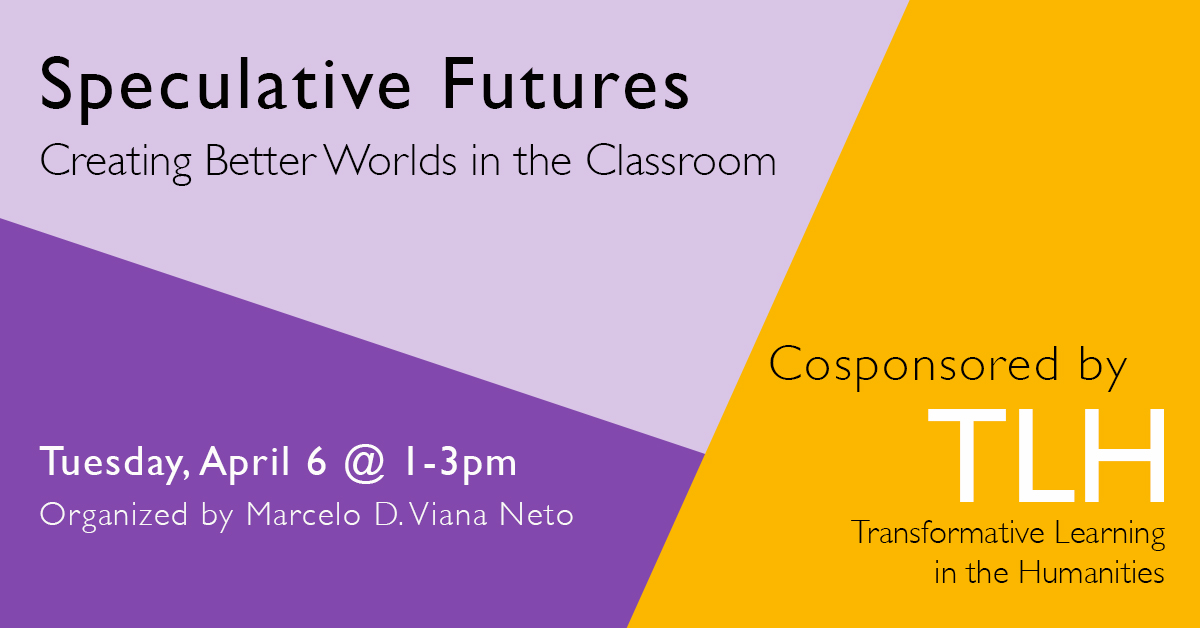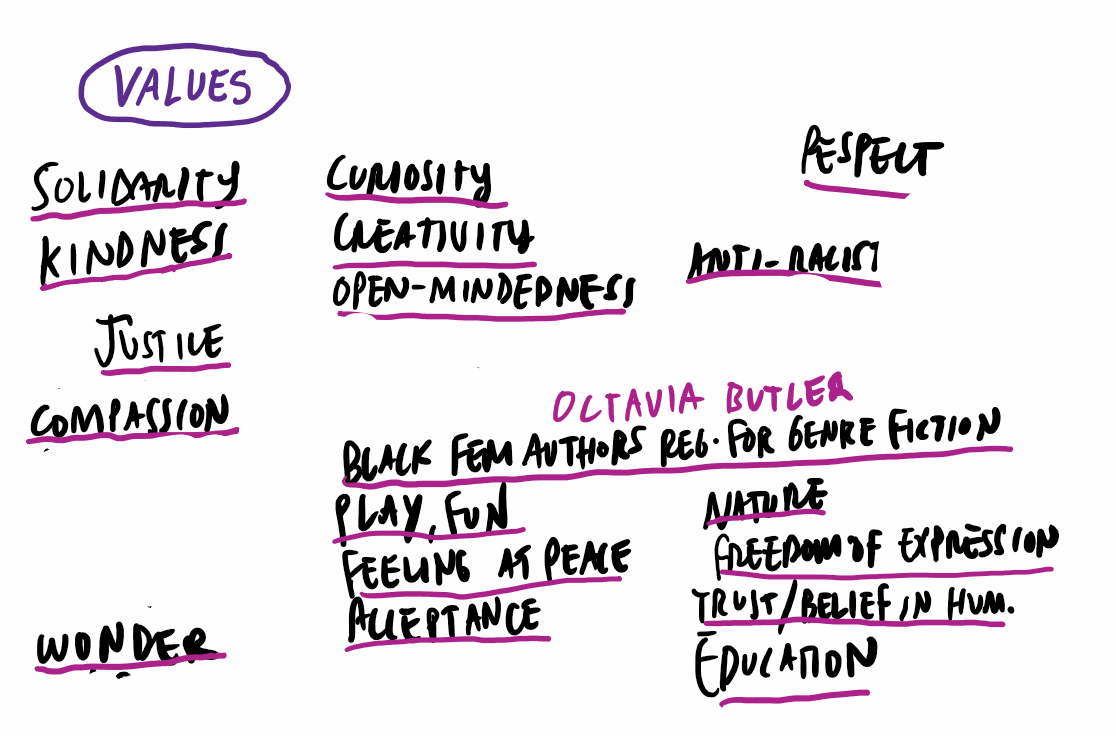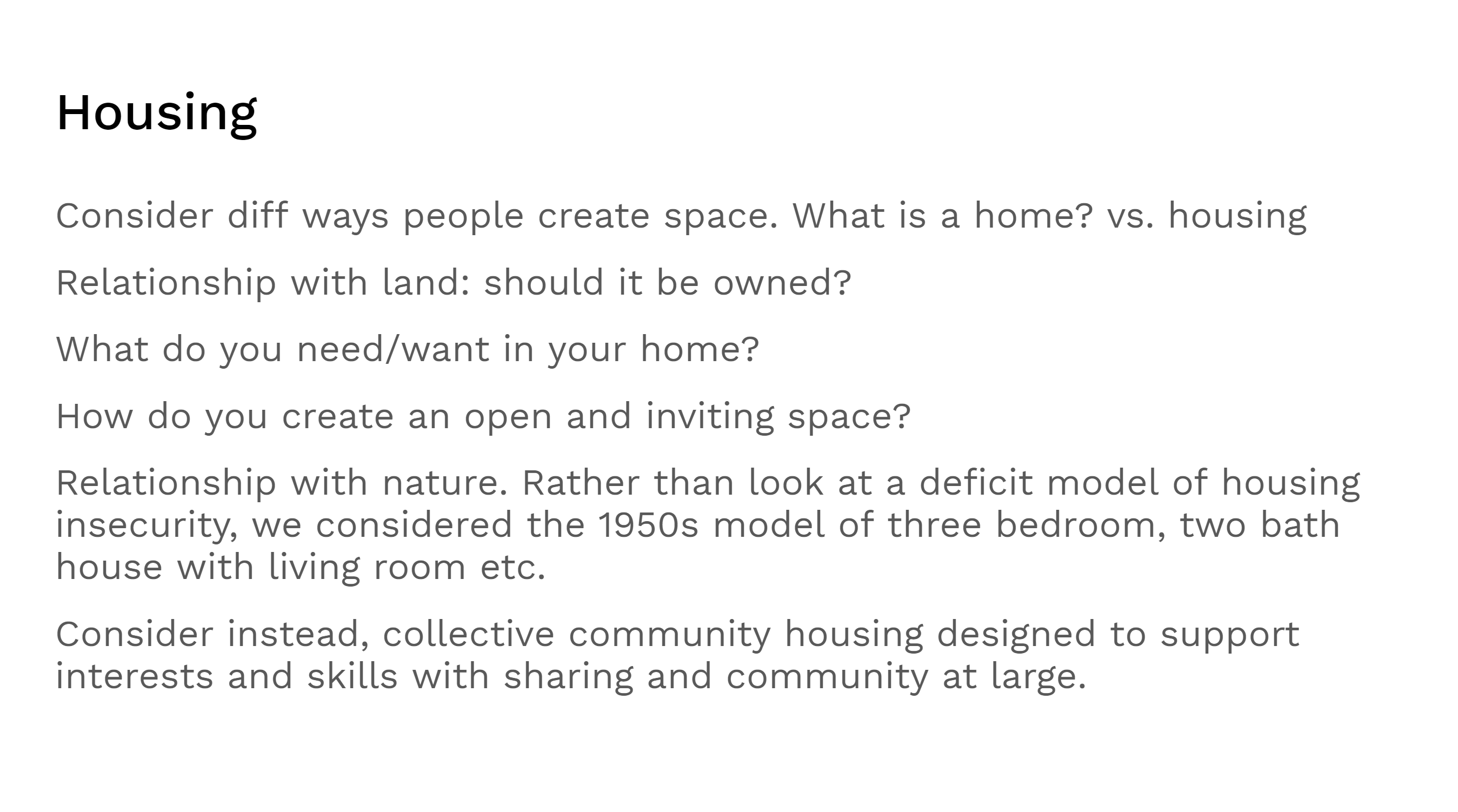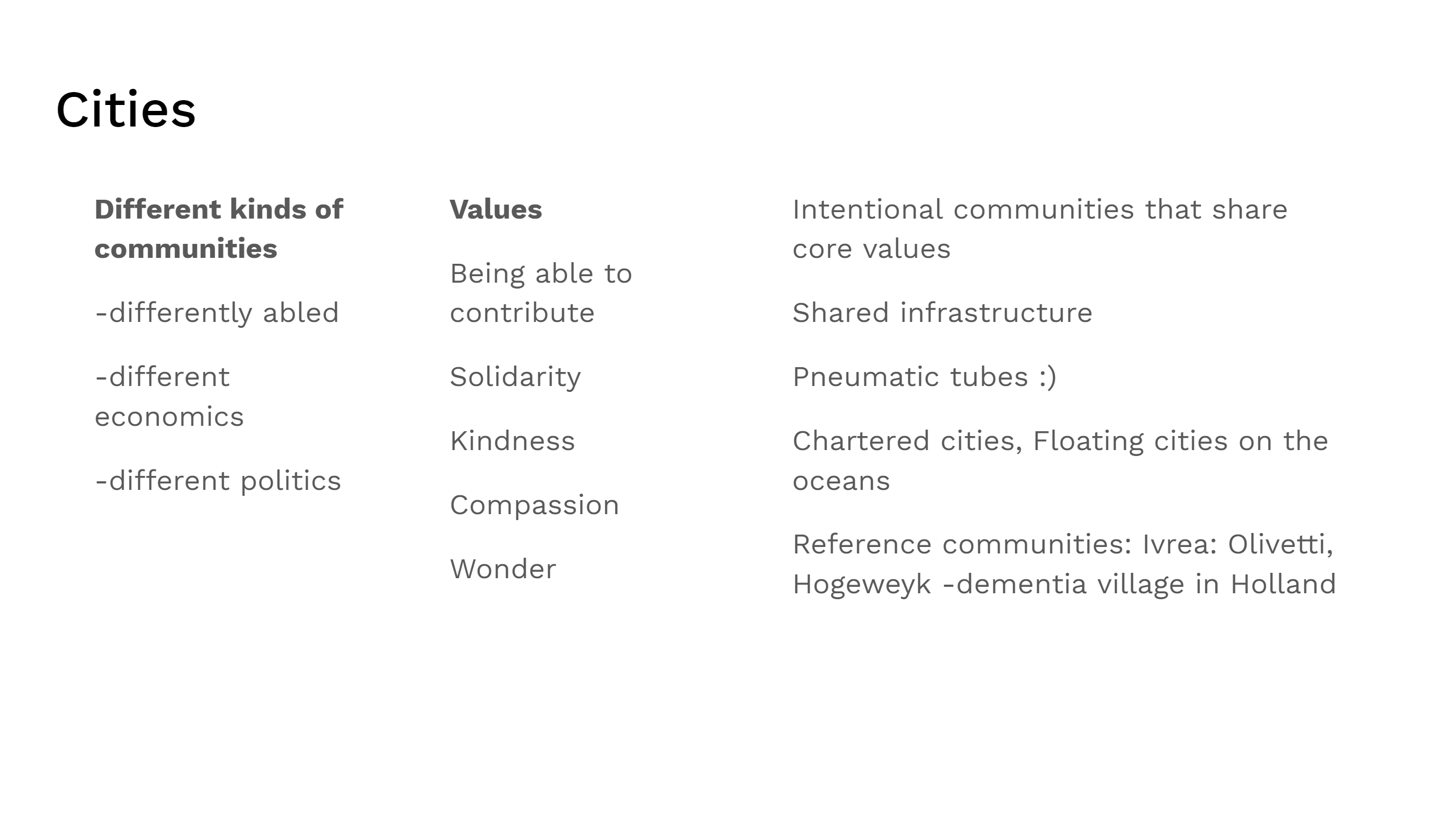
This session was a workshop conducted as part of the CUNY TLH initiative. It was open to the public and held virtually via Zoom in April, 2021.
Session Description
What could the future look like if our dreams for justice were actualized? What values do we want represented and reproduced in this speculative future? How do we work together to create this world? In this workshop facilitated by Prof. Marcelo D. Viana Neto (Assistant Prof. of Game Design, Humanities Department, Hostos Community College), participants will learn how speculative future thinking can free students and instructors from conceptual barriers and allow them to create novel, politically-interesting work in a participatory classroom environment. This workshop is open to all, students, staff, and faculty.
The session will simulate the classroom context in a compressed timeline so participants not only learn about the methodology, but experience it themselves. They will begin by creating a shared list of values to be promoted and reproduced in the classroom. What values we care about? How do we want to relate to one another? What behaviors do we want to promote? Starting with these values, they create a speculative vision for the future by answering big questions like: How would the economy work? What would cities look like? What are relationships like in this imagined world? The session/class then becomes the site for prefiguration, where participants relate to one another as if already living in that future. For instance, if democracy is a value, how can it be implemented in the classroom? What kinds of decision-making processes promote democracy? Voting? Consensus? Who designs the assignments? What does assessment look like in a truly democratic classroom?
Session Post-Mortem
It is easier to imagine the end of the world than a better world.
The workshop is based on a class model I created described in more detail in my Game Developers Conference talk. This is it, in a nutshell:
- The class collaborates on a list of values we want to uphold and reproduce.
- Students identify, research, and teach each other about major socio-political systems that govern our daily lives from a list they create themselves, e.g. capitalism, patriarchy, imperialism;
- They create a vision for the future that replaces these systems with ones that promote their shared values instead;
- They create work (games, in the case of my classes) that would belong in this new imagined future.
The workshop focused on parts 1, 2, and 3 since I only had 2 hours with participants. We had a group of about 20-25 participants that included mostly educators.
Our Values
We started with the values exercise which helped create group cohesion and set the tone for the workshop. More importantly, this set of values serves as a sort of blueprint for our vision for the future. Any new structures we create need to embodie and reproduce our values, not leave it up to chance or take it for granted like we do today.
Below is the values board after it underwent some purging to create a more condensed list.

We then took a quiet minute to recall moments that embodied those values. This pause can help us transition from a present mindset into an aspirational one and recall what is really important in our lives. It sets the tone for the next step: imagining a different future.
Intermission: During the quiet, meditative pause, we were victims of a nasty, coordinated Zoom-bombing attack by a handful of individuals that somehow found this session and decided to disrupt it. It served as a reminder that while we do the difficult but inspiring work of imagingining a new reality, the present will always pose challenges. The classroom or the workshop cannot be completely safe spaces until we have replaced the structures that cause this kind of behavior with ones promote and reproduce a better world.
Our Future
After we recovered, participants were given a set of topics to create proposals for. They self-selected into groups to work on these on a shared Google Slides document and then brought it back to the session. Here's what participants created:







This would serve as the basis for a collective vision of the future. The plan was also to discuss applications in the classroom and possible improvements to the model. Unfortunately, because of the time lost due to the interruption, we were not able to do this.
You can find a link to my Speculative Futures syllabus above
Closing Remarks
We are very good at knowing what we don't want today. I think this is where we start from. And we're relatively good at proposing small changes; we've gotten better over time on the reform front. We often make the mistake that small changes are big, radical ones because we're not truly that good at imagining a radically different society. We don't do it as much as we used to and even our science fiction is regressive at this point.
I think this is the kind of exercise that can create really profound changes for young people, in particular, maybe less so for us who have been doing this for so long and our thinking has become calcified a little bit, but I think it can still help us as instructors and practitioners.
Another thing we usually hear when we talk about reimagining society is that it's not realistic. But the truth is that realistic isn't working for most people. In the words of Ursula Le Guin, we need more realists of a larger reality. So I think we need to get better at imagining better worlds, not just in abstract terms but concretely, kinda like we did today, but obviously at scale and with time.
When I say "we" I mean we as a society. There are already many people who are very good at doing this and thankfully there is a growing trend of imagining alternatives, radical alternatives, to big societal problems. We saw it with the Black Lives Matter movement that changed the discussion on policing and incarceration in the country, and actually, all over the world from small reforms to fully dismantling this racist, white-supremacist system that we have right now. We also saw a few years ago with the Occupy movement, which is a flawed movement since every movement is flawed, but they actually changed the conversation in the mainstream to talking about class, which is something that hadn't happened in this country in a while. All these little bursts of imaginative future-thinking can really push the collective imagination in interesting ways.
We also see artists and musicians like Janelle Monae who produce these beautiful aesthetic visions of a different world and other artists who are completely changing our understanding of gender and sexuality which is finally getting reinvented and shattered and rediscussed especially by young people. These are all visions of a different future that are happening right now.
In my classrooms I try to strike a balance between this energizing imaginative work and also having reverence for what's already been done and what's currently being done because imagination without wisdom is just capitalism by a different name. We don't need to act like Silicon Valley startups, claiming to discover things we have known for generations to be true and then selling them back as innovations. My grandma's rice and beans do not need to be sold at Whole Foods in the "ethnic" aisle for me to know that they're the best in the world. Indigenous societies continue to teach us that we can live differently, that there are other possible worlds, if only we would listen. Decolonial movements all over the world have been waiting for this country to wake up and join then, but we seldom pay attention to the Global South or see their struggles as our own.
The seeds for a better future are already here. They exist in the past and also exist in the present.
Then there's that question of what's next. We imagined all this stuff, so now what? First of all, I think that just imagining it is powerful enough, we don't need to necessarily move on with every single one of these exercises, just the imagination part can already be transformative.
But if we do it right, we don't just imagine it, we live it. Even if briefly. With this compressed timeline and the limitations of the screen maybe made we feel less like we were living in our future as much as it feels like it in the classroom, but those experiences can make you feel like something else is possible. Something that people tell us is naive, now becomes possible, because we've actually experienced it. The professor and the classroom gives us permission to do so.
But when we leave the classroom, society is going to try to steal that feeling back from us and demand you to be "pragmatic" again for the sake of stability or whatever. But then we keep going back to the classroom, over and over again, experiencing that again, living in that small, micro-future that we created together, over and over again. At that point, we start to believe that it's possible, society doesn't have as much of a hold on our imagination, and we can take that with us and share it others.
I hope that you will invent your own ways of imagining futures in your classrooms, or elsewhere, and then you can share it with us and tell us about it. This is not a prescription, it's just my way of doing it and I hope that we can work on this together. It's absolutely worth it.
Thank you.
Brooklyn, New York. 2021.